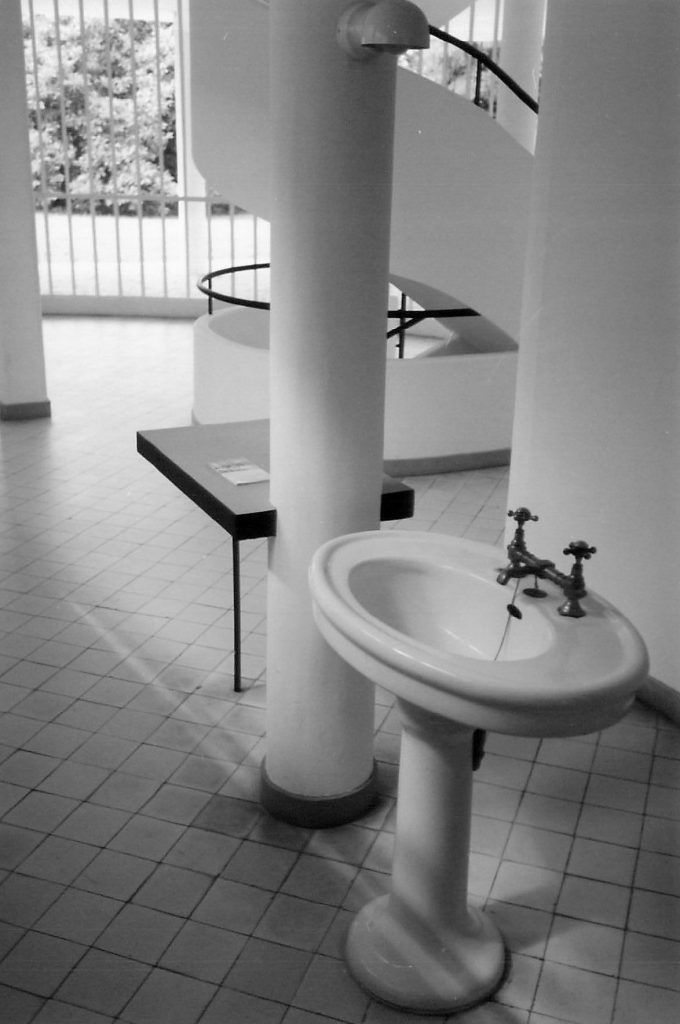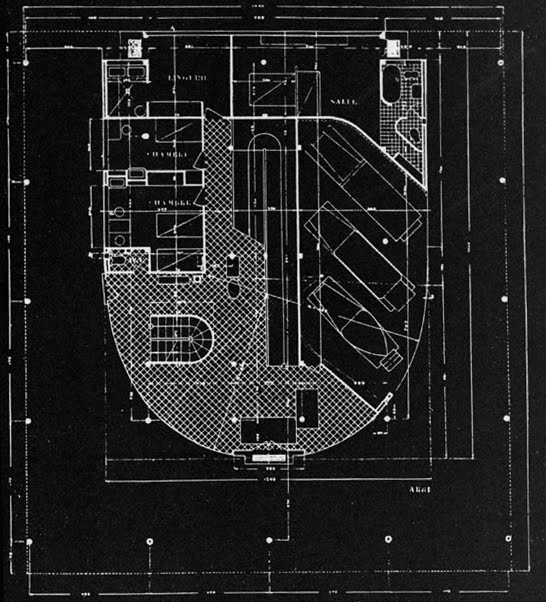
Amid the Coronavirus pandemic, anyone would say how convenient would be to have a washbasin in the entrance hall. As soon as you enter the house you could wash your hands for twenty seconds without worrying about the contamination of the dwelling itself. In one way or another, this impressive idea seems to be a momentary necessity rather than a reason to change our way of thinking about a sanitary object – removed from its place of daily intimacy. Nevertheless, this very idea became the leitmotif of Le Corbusier masterpiece where contradiction meets accident.
Perhaps, when Le Corbusier explained to Madame Savoye the washbasin in the middle of the entrance hall, the least she could accept was to put it behind the column. This could be interpreted why in contrary to all his drawings the basin is put in front of the piloti. But as interesting as the story of disagreements between the architect and client might be, one would ask “what on heavens name a wash basin is doing in the entrance hall?” Rowe points out that any intention of explaining the basin as a functional accessory doesn’t make sense. There is no soap or towel in sight. Maybe it was intended for the house maid alone “to wash her hands after whatever she was doing in her room and before she enters the house proper.” But this falls too when considering Le Corbusier early plans, where he intended the washbasin to have a more prominent location framed by a sculptural curved screen.
However, when built, the washbasin was left completely exposed, under a factory like industrial glazing, uplifted to a museum object which suggests the ablutions of a ritual entry, like in the catholic churches where they have basins of holy water near the entry doors, or mosques have ablution fountains. “Is it then a place of ritual purification the equivalent of a holy-water stoop?” – Rowe asks. I believe Le Corbusier’s wants to tell us that this house is about the act of purification, of becoming better people. Even if the washbasin doesn’t have water, the striking whiteness would evoke a negation towards the superfluous things in life. “Le blanc morale”.
Looking back nearly one hundred years ago, one would say, should we really need to teach people how to wash their hands. Well, let’s take this moment to appreciate the act of cleansing, perhaps we may become better people.

Andi Arifaj, March 2020
- Friedman, Daniel S., and Nadir Lahiji. 1997. Plumbing: Sounding Modern Architecture. New York: Princeton Architectural Press.
- McKay, Graham. 2011. misfits’ architecture. May 6. Accessed March 22, 2020. https://misfitsarchitecture.com/2011/05/06/the-dark-side-of-the-villa-savoye/.
- Nam, S. T. 2013. “Los objetos sanitarios en le corbusier: La libertad dispositiva y la exposición radical en los años 20.” RA Revista de Arquitectura 87-98.
- Passanti, Francesco. 1997. “The Vernacular, Modernism, and Le Corbusier.” Journal of the Society of Architectural Historians 438-451.
- 2012. BBC History of Art in Three Colours. Directed by Mat Hill. Performed by James Fox.
